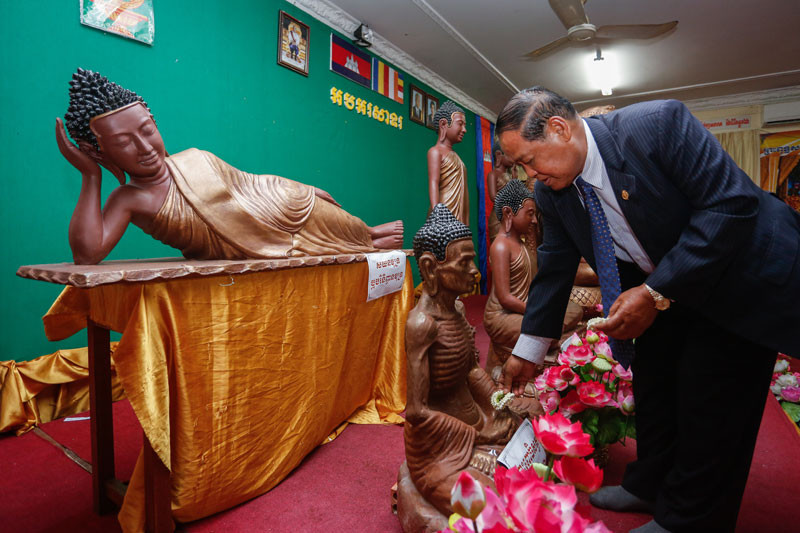The country’s sculptors will no longer need to rely on their creativity when crafting the likeness of the Buddha, after the government Tuesday released a book with exact specifications for 12 different poses that will be allowed to adorn pagodas.
Min Khin, the minister of cults and religion, said the 150-page book would be distributed to pagodas across the country to ensure that Buddha statues maintain a uniquely Cambodian look.

“We have seen Buddha [statues] in Thailand, Burma and other neighboring countries are different a little bit, but Cambodia does not have a real sample [Buddha] and now we have it,” Mr. Khin said during an event at the ministry to unveil the book.
Seng Somony, an undersecretary of state at the ministry, said the specifications and poses had been compiled following a request from Prime Minister Hun Sen during a conference with senior monks in July 2013.
“We have conducted research based on the main documents from the Angkor era, Bayon temple and from our current regime,” he said.
The book shows photographs of the 12 positions in which the Buddha may be depicted, along with separate charts giving the appropriate ratios for each part of the statue. The positions include the Buddha sleeping, standing with one palm raised, standing with an alms bowl under his arm and meditating in various ways, including under a seven-headed naga.
Mr. Somony said that there were no plans to punish sculptors who failed to follow the guidelines, and that existing statues that did not adhere to the new rules could remain standing.
“We do not force them, we will just invite them to learn about this document,” he said.
Var Lina, 33, a sculptor at a shop near the Royal Palace, said he liked the idea of having a guide to proper Khmer styles for the Buddha.
“I think sculptors can follow it 40 or 50 percent of the time, because we have to follow what the customer orders,” he added. “If we do not follow customers, they will find other places.”



